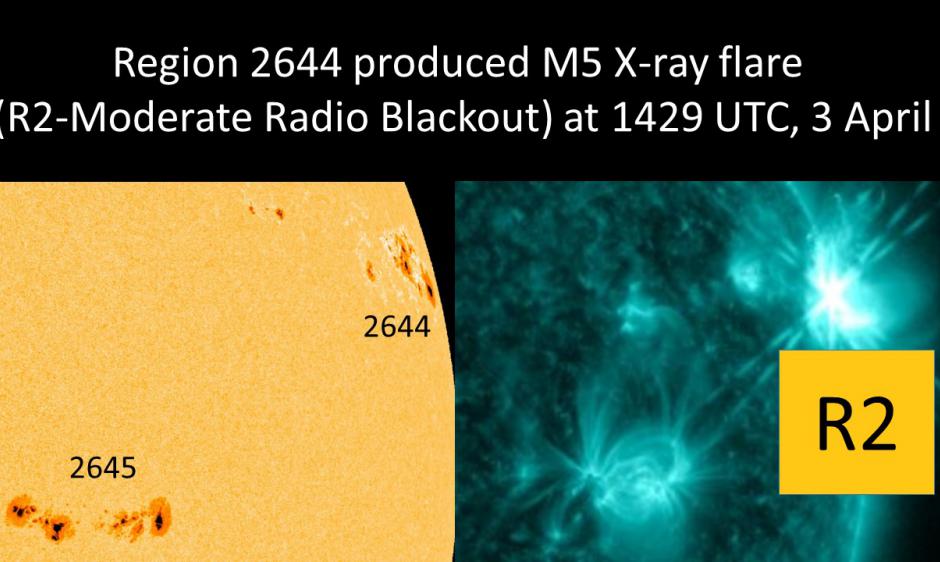
Region 2644 remains a magnetically complex spot group and M-class flares are expected the remainder of today (3 April). The region's most recent significant flare was an M5 (R2-Moderate Radio Blackout) reached at 03/1429 UTC (1029 ET). The region is rotating towards the limb, but due to its extensive length (over 15 heliographic degrees), the region will take two days before rotating mostly beyond the western limb. Region 2645 is also a magnetically complex group with mixed polarity present within the trailer penumbra; however, most activity from this region has been C-class flares. As Region 2644 rotates to and beyond the west limb over the next three days, there will be a decreased probability of M-class flares each day. Keep checking our SWPC website for the latest information and forecasts.